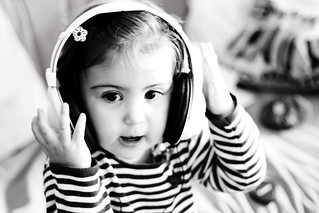MuseScore Brings Out Your Inner Mozart!
Innovative New Program Connects a Kid’s Developmental “Ear” To Musical Composition

A child’s relationship with sound is very profound and organic.
Young ears pick up on sound patterns before they even realize what they’re doing. From birth, our brains spend every day sorting through the sounds of the world around us, from human speech to footsteps, running water to radio static. Long after we’ve developed the ability to speak and interpret spoken language, humans continue to grow as listeners. As we get older, we hone our ability to hear patterns and to gather information about our surroundings based on the sounds that we hear.
One of the most sophisticated, pattern-related ways that we use our sense of hearing for is music. The patterns created by notes nestled amongst each other sound like, well, music to our ears! However, unlike language acquisition, learning to understand music isn’t something that necessarily comes automatically with repeated exposure. Music is complex, and many of its complexities lie in hearing patterns that most people don’t know to listen for.
Perhaps the best way to learn any new skill is to experiment without a clear goal in order to become familiar with the materials, tools, and techniques involved. Music is no exception to this – experimenting with different sounds, note patterns, beats, instruments, and musical styles is a fantastic way to learn about the basics of music. However, while a hands-on, exploratory and experiential approach to familiarizing ourselves to music sounds like lots of fun, it’s not the most practical of approaches. Even if most people had easy access to a wide range of musical instruments to test out, there are certain sounds that only experienced musicians have the skills to get out of most instruments – meaning that experiential music learning might not be truly possible.
Luckily, there’s a free software that solves that problem! Designed to be used for music composition, MuseScore is a download-able program that allows users to not only create their own sheet music (on however basic or complex a level you’d like), but it includes the sounds of a very, very wide range of musical instruments – meaning that users can hear Yankee Doodle or Jingle Bells played by everything from an oboe to bagpipes!
While the ins and outs of MuseScore are somewhat complex, with a little bit of practice, it’s quite easy to use. Upper elementary students can easily use the program with success, as can teens and adults. Experimenting with the program can lead to some interesting discoveries, and a wide range of helpful tutorials are available as well. New users can explore the MuseScore online tour to learn the basics of navigating the program, and a series of helpful how-to videos are available as well. There’s even an extensive How To list filled with instructions for completing many common tasks in music composition.
 In addition to allowing inexperienced musicians the opportunity to test out the sounds of a wide range of instruments, MuseScore allows budding composers to experiment with notes and arrangements. Users can create their own pieces of music (incorporating multiple instruments), or input notes from a favorite song in order to create an alternate version of a familiar song.
In addition to allowing inexperienced musicians the opportunity to test out the sounds of a wide range of instruments, MuseScore allows budding composers to experiment with notes and arrangements. Users can create their own pieces of music (incorporating multiple instruments), or input notes from a favorite song in order to create an alternate version of a familiar song.
It has been scientifically proven that playing and creating music is very beneficial to the human brain – use MuseScore to inspire young musicians, and help their brains grow!
[Photo credit: (cc) mirahacia@tras]
 Hilltown Families
Hilltown Families 




























